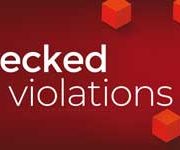Journalists threatened. The Italian paradox has been shrunk and hidden in Europe
Questo articolo è disponibile anche in:
![]()
The European monitoring centre in its first year and the Council of Europe report ten times fewer threats than Ossigeno in Italy
OSSIGENO 19 MAR 2021 – by Luciana Borsatti and Maria Laura Franciosi – It was with interest, but also disappointment, that we followed on behalf of Ossigeno per l’Informazione the online conference MFRR Summit – Locked Down: Protecting Europe’s Free Press promoted by the European Centre for Press and Media Freedom (ECPMF) in Leipzig and the Media Freedom Rapid Response (MFRR): four days of debate – from 17th to 20th March – dedicated to the various obstacles to press freedom in Europe, from the impact of the pandemic on media freedom and on the public right to information, to risks in covering protests, and to hate and defamation campaigns on social media.
With interest because the MFRR project, launched in 2020 and funded by the European Commission, is supported by various other organizations including Article 19, International Press Institute (IPI), Federation of European Journalists (EFJ), Free Press Unlimited, University of Leipzig and Osservatorio Balcani e Caucaso Transeuropa (OBCT). Its aim is to identify, monitor and combat violations of freedom of the press in EU countries and those candidates for entry, and also to provide “practical and legal support” to protect journalists and media workers, including through public awareness.
But disappointment because, once again, Ossigeno has had to note that MFRR project, as well as the dedicated platform of the Council of Europe, still take too little note of the threats to which Italian journalists are subjected and to support them in their work. And this oversight has occurred despite the fact that Ossigeno per l’ informazione – one of the founding members of the European cooperative ECPMF, but not involved in the project – continues to report every year, in a detailed manner, hundreds of episodes of serious and unjustifiable attacks on journalists and provides many peer support actions and dozens of free legal defences, in collaboration with the British NGO Media Defence. We are therefore very worried about the persistent inattention to the situation of Italian journalists that we have been reporting for years through our Observatory, endeavouring to provide concrete support to colleagues while having far fewer resources than those available to MFRR.
The online conference was opened by the UN Special Rapporteur for the promotion and protection of freedom of expression and opinion, Irene Khan, and by a video message from the Vice President of the European Commission, Věra Jourová. About thirty journalists and experts from 16 countries participated in the thematic sessions.
Mapping Media Freedom, the numbers do not add up
Among the sessions was a seminar on the Mapping Media Freedom tool – created by the ECPMF together with IPI and EFJ and supported by the European Commission -which colleagues are encouraged to use to denounce violations in their countries. But it is unclear why this instrument did not include, in assessing the Italian situation, not only the data of the Ossigeno Observatory which for over fifteen years has recorded and verified hundreds of threats and intimidations to reporters on the ground, but also those of the Italian Ministry of the Interior.
In its first four months of operation, from March to June 2020, Mapping Media Freedom recorded 126 serious threats to press freedom in about two-thirds of the 33 countries that fall under its coverage. In the related report, Mapping Media Freedom, a Four-Month Snapshot, it emerges that the countries with the greatest number of threats to press freedom were Turkey (16), Germany (14), and Italy and the United Kingdom each with 11 cases. These are threats of various kinds, from physical attacks to lawsuits and censorship attempts.
In three of those four months in Italy, Ossigeno per l’Informazione recorded not 11, but over 127 cases of threatened journalists, detailed in its second quarterly report April-June 2020, drawn up with the rigorous verification methodology adopted for years by Ossigeno and available in Italian, English and French. On the basis of this method, Ossigeno was able to confirm 44 cases of intimidation, itemised with names and details, and judged a further 83 episodes as “probable”, which it was unable to investigate in depth due to lack of resources. Among the cases recorded in the report there are many attacks on investigative journalists, a high number of reporters attacked during the Covid emergency and a proliferation of complaints by magistrates against journalists. During the whole semester January-June Ossigeno recorded a total of 250 cases of threatened journalists, already in the first quarter it had already counted 123. In that same semester the “Coordination Centre for monitoring, analysis and permanent exchange of information on phenomenon of acts of intimidation against journalists “of the Italian Ministry of the Interior, which only takes into account formal complaints to the police and does not include legal actions, recorded 83 acts of intimidation against journalists, on average 15 cases per month: a monthly trend more than doubled compared to the two-year period 2018-2019.
OSSIGENO perl l’Informazione, as on other occasions (the latest in giving its contribution to the report on the implementation of the rule of law in the Union of the EU Commission) invites the European institutions and other journalists’ organizations to consider the risks of a similar underestimation of the phenomenon of attacks on press freedom and the right to information in a founding country of the European Union and consolidated democratic traditions. And he also asks all European observers if they believe that this underestimation of the Italian case could be an alarm signal to call for greater attention also to what is happening in other European countries with a consolidated pro-European and democratic tradition. In this circumstance Ossigeno also renews the appeal to political forces and Italian institutions for the creation of an independent agency linked to civil society to monitor threats to journalists and human rights defenders.
LB MLF






Leave a Reply
Want to join the discussion?Feel free to contribute!